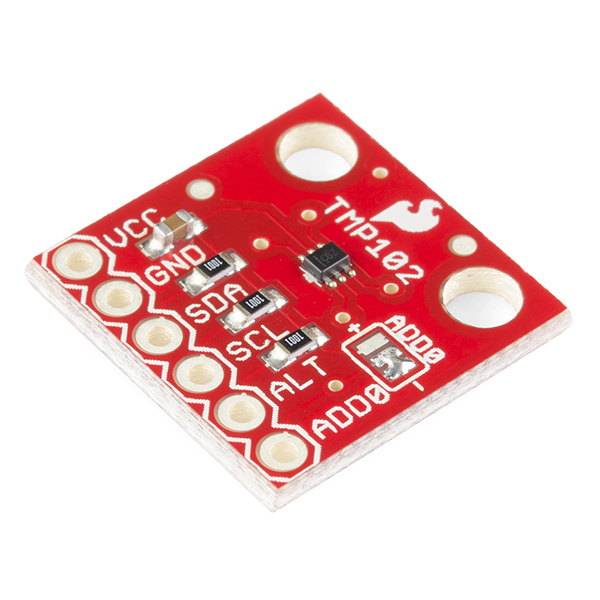In order to measure atmospheric temperature, we included on our payload a digital temperature sensor, the TM102, which can be purchased using the following link:
\https://www.sparkfun.com/products/11931


The TMP102 provides temperature measurements by calculating the difference in arrival time of a test signal through a wire exposed to some unknown temperature. This is compared to a standard, constant clock signal which isn't affected by temperature.
A change in temperature tends to induce predictable changes in a material's electrical conductivity, or resistance. Since most metals exhibit greater resistances with increasing temperatures, the (change in) arrival time of a signal traveling through such a wire can be accurately matched to its temperature. This sensor uses diodes which have particularly large and linear temperature coefficients. Therefore, with a constant operating current, a change in temperature felt by the TMP102 (changing the resistance of the test wire) induces voltage differences read by specific analog inputs on the Arduino microcontroller.
The manufacturer has published an operating range of -40 C to +125 C but we expected our payload to experience temperatures slightly lower than that. We tested the accuracy of the TMP102 down to -74 C. With the help of Mr. Larkin, we were able to use a freezer in the graduate labs of the Mark J. Science Complex at EMU.
Seen above is the refrigerator in the lab, showing -74 C. The laptop on the left is connected to an arduino through USB. We wire-wrapped the TMP102 to that arduino using long wires which were thin enough to allow the refrigerator door to close and latch. We protected the sensor from potential condensation in the refrigerator with a small zip-lock bag.
The TMP102 sensor reacted faster than expected, reaching equilibrium with the refrigerator in under fifteen minutes. We defined that point by no reported change in temperature by the TMP102 for a duration of 10 to 15 seconds. By that time the change in temperature with time had settled to 0.01 C per second.
We then tested the TMP102 in with a less powerful refrigerator in the same lab as well as at room temperature. The following table summarizes those results:
| Measured Temperature (C) | Actual Temperature (C) | %-error |
|---|---|---|
| -75.0 | -74.0 | 1.35 |
| -17.9 | -17.5 | 2.29 |
| 22.1 | 22.9 | 3.49 |
"Actual Temperature" was measured using an IR thermometer except in the coldest test, in which the temperature reported by the refrigerator was used.
The results show that we can depend on this temperature sensor to operate as expected, outside the published range with minimal %-error.
The results show that we can depend on this temperature sensor to operate as expected, outside the published range with minimal %-error.

No comments:
Post a Comment